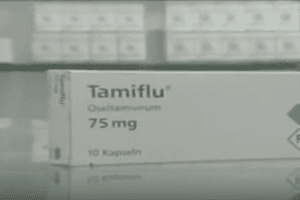
Some current influenza viruses are carrying a mutation—A/H1N1-H274Y—that makes them resistant to Tamiflu. The Centers for Disease Control and Prevention (CDC) estimate that a small sampling of flu viruses nationwide carry the mutation. The Tamiflu resistant mutation has occurred in A/H1N1, one of the main circulating strains causing flu this year. Although Tamiflu is recommended as a […]

Some current influenza viruses are carrying a mutation—A/H1N1-H274Y—that makes them resistant to Tamiflu. The Centers for Disease Control and Prevention (CDC) estimate that a small sampling of flu viruses nationwide carry the mutation. The Tamiflu resistant mutation has occurred in A/H1N1, one of the main circulating strains causing flu this year.
Although Tamiflu is recommended as a treatment when outbreaks occur in health care facilities and to prevent the flu shortly after exposure, vaccination is the preferred and more effective method of prevention. The current vaccine still provides protection against the flu.
Scientists at the World Health Organization (WHO), led by Dr. Frederick Hayden, have discovered evidence of the mutant strain worldwide. Of greatest concern is that resistant viruses have been detected in specimens from people who where never treated with Tamiflu because drug resistance is usually seen in people who have been exposed to a drug.
The percentage of mutant viruses is low—about 3.8 percent in a sampling of 237 specimens from patients nationwide this winter—according to the CDC. Dr. Joseph Bresee, chief of the epidemiology and prevention branch in the CDC’s influenza division, feels there is no need to embargo Tamiflu, “This certainly bears close watching,” he said yesterday. “We’re intensifying our surveillance effort to determine if this is an increasing trend.” Bresee added that, “It was unexpected, mainly because, historically, Tamiflu resistance has been very low. And most resistance we’ve seen has been among treated people.” Bresee also found it interesting that there is a lack of Tamiflu resistance in Japan, a country where Tamiflu is widely used.
Since last flu season, the CDC enhanced its surveillance in an effort to detect flu viruses resistant to Tamiflu and that increased monitoring has provided the agency with the ability to detect resistant strains quickly, Bresee said. Roche Pharmaceuticals, Tamiflu’s maker, noted that some global health experts have cited limitations in the preliminary data, which found resistance to its drug, and have called for further research. Bresee also noted that influenza viruses are constantly mutating through a process called antigenic drift, which causes them to change from one season to the next and, sometimes, within a single flu season. On occasion, these mutations can cause drug resistance, which means the medications either do not work or do not work as well.
Anti-flu drugs belonging to a class called adamantanes were embargoed indefinitely by the CDC in January 2006 because flu viruses developed mutations against the drugs; the medications remain under the embargo. “When we noticed it,” Bresee said of the resistance problem, “well over 90 percent of all viruses were resistant.” At the time, the CDC underscored Tamiflu’s availability. Resistance to Tamiflu has been detected by the WHO in Canada and Europe. In a recent sampling, Norway had the highest percentage of viruses carrying the mutation.
The influenza virus is highly active throughout New York State and has grown to high levels in several other states, and—according to surveillance data from the state Health Department—remains high in both Nassau and Suffolk counties.
The personal injury attorneys at Parker Waichman LLP offer free, no-obligation case evaluations. For more information, fill out our online contact form or call 1-800-YOURLAWYER (1-800-968-7529).


